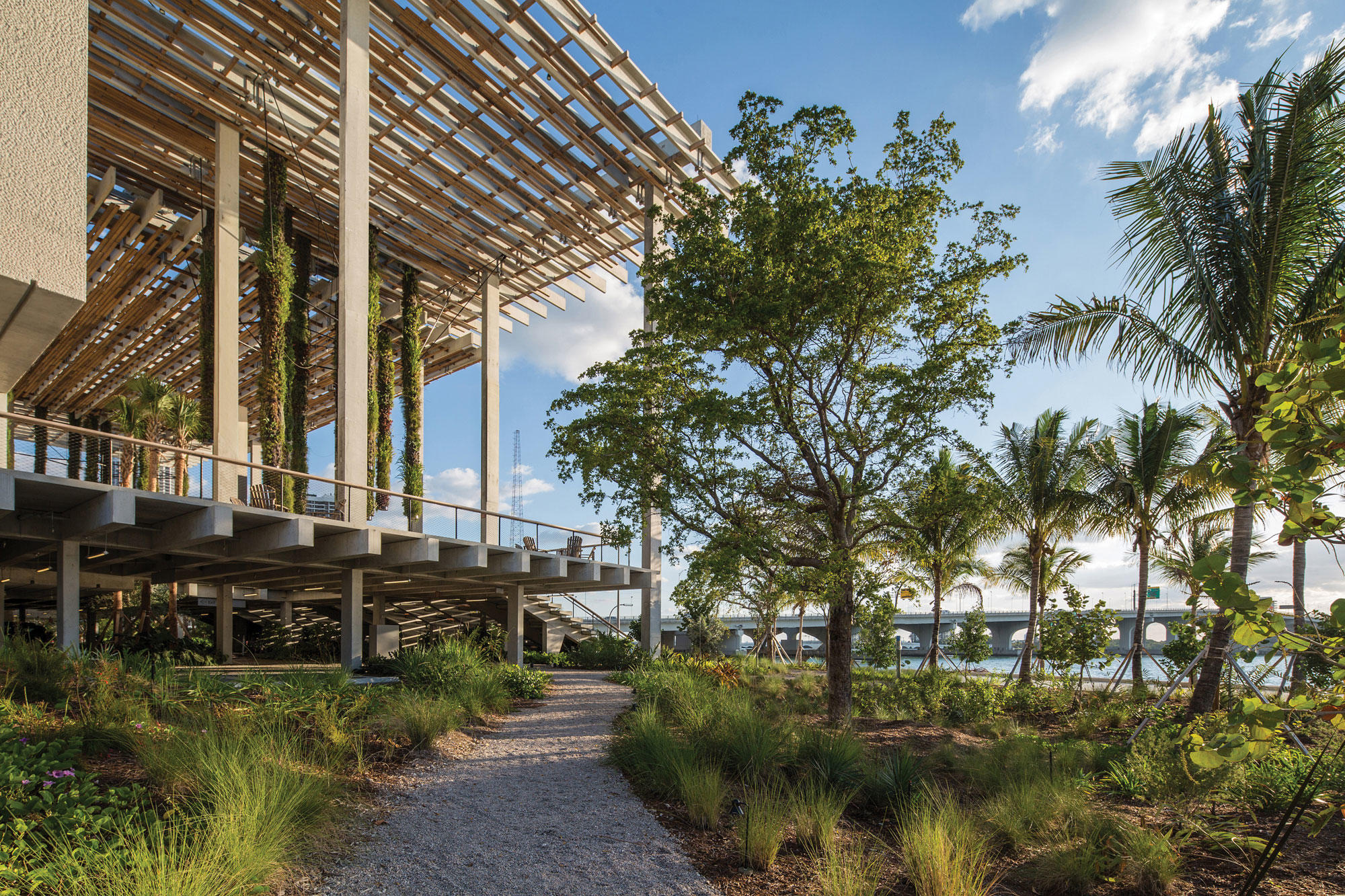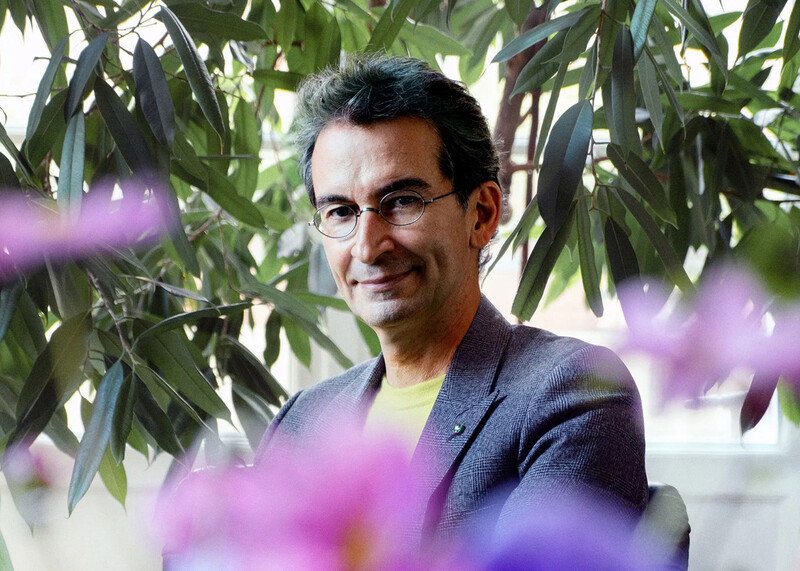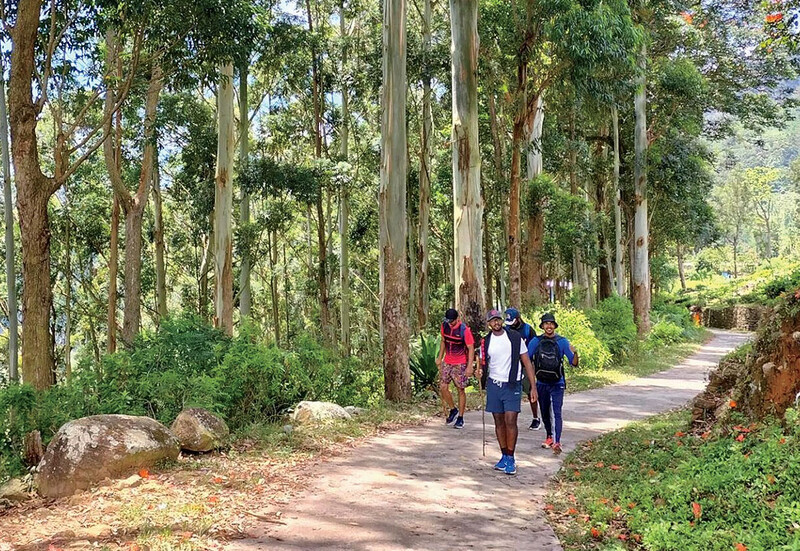In 1977, when Laurinda Spear ’75GSAPP started the Miami-based architecture firm Arquitectonica, Time magazine described the area as “a seedy backwater of debt-ridden hotels, gaudy condominiums and decaying apartments.”
Not for long. Money began to blow in, and the land of pink flamingos was met with white marble and TV’s Miami Vice, whose opening credits showed a pink spiral staircase in a cube of space that, as the camera pulled back, proved to be a hole in the middle of a massive edifice of glass. That building, the Atlantis, was to become Arquitectonica’s most famous structure.
Spear, who was born in Minnesota and raised in Miami, had always wanted to be an architect, and after grad school, she wasted little time making a splash. Her first project, the red, ziggurat-shaped Babylon Apartments, finished in 1982, “set a new bar for urban architectural pizzazz in Miami,” according to the Miami Herald.
For two decades, Spear used steel, brick, and glass to build instant Miami landmarks. Then, in 2005, she formed ArquitectonicaGEO, shifting to landscapes and a more fragile palette of plants, soil, and water. As a landscape architect, Spear must consider the ecological implications of her designs, and make them adaptable to environmental changes, such as rising seawater. For the Pérez Art Museum, which opened in 2013 on the shoreline of Biscayne Bay, she created a lush oasis of 64,000 subtropical and tropical plants. “It’s a resilient design because it anticipates extra water on the site in the future,” Spear says. In recognition of this feat, the American Society of Landscape Architects gave ArquitectonicaGEO a 2015 Honor Award for design.
Whether with delicate flora or impressive facades, Spear continues to make her mark on Miami according to one consistent philosophy: “We should know about the sun, the air, the light, the natural conditions. We have to be thoughtful about the way we put a building on the earth.”




